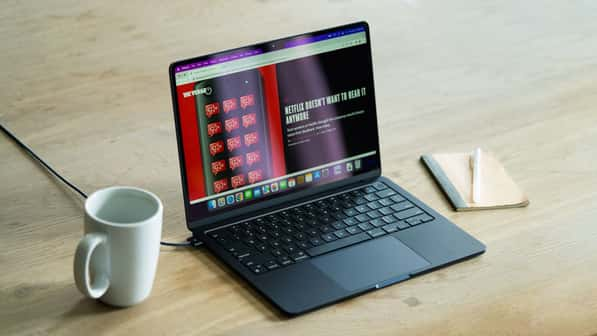There are so many things like this all caught up in one paraphrase in this report yesterday that appears prominent -- "The problem, as hilariously put by Judge Justin Walker in his opinion,
is that this technology has never really existed. It was one of those
“just around the corner”-type innovations that has always been promised
but never actually delivered. It was a fantasy, . ."
✓
The auto industry lost its spectrum fight with the FCC because V2V was always a fantasy
‘Vehicle-to-vehicle’? More like ‘vehicle-to-nothing’
Today, the DC circuit court released its decision, siding with the Federal Communications Commission, on its reallocation of part of the 5.9GHz band. It’s a big win for the FCC and a big loss for the auto industry, which has promised to use the airwaves to improve safety through a technology called “vehicle-to-vehicle” (V2V) or “vehicle-to-everything” (V2X) communication.
The problem, as hilariously put by Judge Justin Walker in his opinion, is that this technology has never really existed. It was one of those “just around the corner”-type innovations that has always been promised but never actually delivered. It was a fantasy, and today, the court’s basically said as much.
But first, a little history lesson: in 1999, the FCC agreed to set aside 75 megahertz of spectrum in the 5.9 gigahertz band for something called dedicated short-range communications (DSRC) services, which would be used to improve road safety through V2X technologies.
Broadly speaking, V2X allows vehicles to send and receive messages about road conditions, like speeding cars, weather, or traffic congestion. It could also help prevent crashes by using that information to make decisions, like applying emergency braking.
Some experts say the wide deployment of the technology could help speed up the adoption of autonomous vehicles, which could use V2V communications to bolster their ability to “see” their environment and make better driving decisions.
But the auto industry was slow to develop V2X technology, and the rollout has been piecemeal. Mercedes installed V2V equipment in both the 2017 E-Class and 2018 S-Class. General Motors also introduced V2V in the Cadillac CTS in 2017. Other automakers began looking closely at a newer technology called cellular V2X (C-V2X), using existing cell networks to send communications.
In 2017, the Trump administration announced that it was killing an Obama-era mandate that would have required new cars to be equipped with V2V technology. And last year, tensions escalated when the FCC put out a new plan to use some of the spectrum set aside for V2X to expand Wi-Fi instead. Calling V2X “a promise unfulfilled,” FCC chair Ajit Pai proposed to make the lower 45MHz of the band available for unlicensed uses such as Wi-Fi and allocate the upper 20MHz for C-V2X.
Automakers lobbied against the decision, arguing that allowing Wi-Fi to use parts of the spectrum would interfere with connected car technology. Their argument basically boiled down to this: we want to deploy V2V technology — the Alliance for Automotive Innovation promised 5 million pieces of V2V tech over the next five years — but we can’t until the FCC promises not to use some of the spectrum for Wi-Fi.
Flash forward to 2022, and no vehicle on the road today is using V2V technology in any meaningful way. “For the next twenty years, intelligent transportation systems did not develop as the FCC had hoped they would,” Walker writes in his decision. “As of 2020, ‘no commercially-marketed vehicles’ used the 5.9 GHz band to provide vehicle safety features.”
The petitioners in this case are the Intelligent Transportation Society of America and the American Association of State Highway and Transportation Officials, and they are arguing in favor of keeping 5.9GHz for transportation purposes exclusively. They claim that the FCC violated the Transportation Equity Act for the 21st Century, which they argue gives the Department of Transportation veto power over the FCC’s spectrum allocation authority. But Judge Walker rejects this argument.
Walker also sides with the FCC’s explanation of the remaining 30MHz of spectrum as being sufficient for intelligent transportation systems, while also noting that new technologies, such as “radar, LIDAR, camera, and sensors,” will help make up the difference.
And the judge dunks on the petitioners’ claim that automakers and tech companies need more than 30MHz of spectrum for these “as-yet-to-arrive technologies,” noting that “the Petitioners have directed us to no significant developments in the field of yet-to-arrive technologies.”
I can’t begin to tell you how many times we’ve been told that V2V technology is coming. Every CES over the past decade has featured some demonstration of the promised innovations: cars that can see through walls!; cars that can talk to traffic signals!
But as the FCC argued and Walker affirmed, these promised innovations never materialized. Fortunately, there’s still time left to get something on the road — and a smaller slice of spectrum by which to do it.
Featured Videos From The Verge
M2 MacBook Air review: a new Air-a

The new MacBook Air has Apple’s latest in-house processor, the M2. It’s got a better screen, thinner and lighter design, better speakers, a much-improved webcam, an excellent keyboard and trackpad, more convenient charging, and excellent build quality. It also comes with a higher price tag
✓



No comments:
Post a Comment